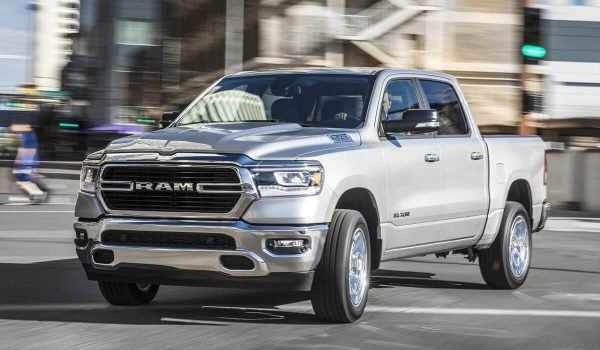Embarking on the journey of importing your dream car into the Lone Star State of Texas opens up a world of possibilities but can also seem like navigating a complex maze of regulations, paperwork, and inspections. The allure of driving that special vehicle on Texas roads, whether it’s from another state or even overseas, comes with its own set of challenges. Understanding the intricacies of Texas import regulations, comprehending the necessary steps to ensure compliance and safety, and managing the financial considerations involved are crucial elements in this process. In this comprehensive guide, we’ll delve into the intricacies of importing and registering a car in Texas, breaking down each essential step to simplify the process and make your dream of owning that special vehicle in Texas a reality.
Table of Contents
Understanding Texas Import Regulations
Understanding Texas import regulations is pivotal when considering bringing a vehicle into the state. Texas holds specific standards and requirements for imported vehicles, necessitating meticulous adherence to ensure compliance. Key aspects encompass emissions standards, safety inspections, and essential documentation. Meeting these standards often involves comprehensive vehicle inspections conducted by authorized entities to verify compliance with Texas’ stringent safety and emissions criteria. Moreover, it’s crucial to familiarize oneself with the state’s unique regulations regarding vehicle types, as different categories might have distinct import stipulations, further emphasizing the need for thorough research before initiating the import process.
Comprehending the intricacies of Texas import regulations involves staying updated with any evolving legislative changes or updates in the state’s vehicle import policies. These regulations might encompass various aspects, including emission standards set by the Texas Commission on Environmental Quality (TCEQ) and the Texas Department of Motor Vehicles (TxDMV) requirements for title transfers and registrations for out-of-state vehicles. Navigating through these guidelines effectively streamlines the import process, ensuring compliance with Texas laws and facilitating a smoother experience in registering an out-of-state or overseas vehicle in the Lone Star State.
Navigating the Import Process
Navigating the import process when you ship a car to Texas involves a series of meticulous steps and considerations. Firstly, understanding the logistics of shipping a vehicle from another state or even overseas is paramount. Selecting a reliable and reputable shipping company that specializes in vehicle transport ensures a smoother journey for your car to reach the Lone Star State. Coordinating with the shipping company involves providing necessary documentation, such as the vehicle’s title, bill of sale, and any required export/import paperwork. Additionally, comprehending the shipping timelines, modes of transport (whether by sea or land), insurance coverage, and associated costs facilitates a well-organized import process.
Once the car arrives in Texas, the import process further unfolds with detailed inspections and compliance checks. Vehicles shipped from overseas might face additional scrutiny concerning compliance with emissions and safety standards set by Texas authorities. These inspections, often conducted by authorized agencies, aim to ensure that the imported vehicle aligns with Texan regulations. Additionally, arranging for the necessary paperwork, including customs documents, bill of lading, and other pertinent records, is pivotal in facilitating a seamless transition for the vehicle to enter Texas and commence the registration process. Overall, a comprehensive understanding of both the shipping logistics and the subsequent import procedures is vital to successfully navigate the process of bringing a car to Texas from another location.
Financial Considerations
Financial considerations play a pivotal role in the process of importing and registering a vehicle in Texas. Importing a car often incurs various costs, including import taxes, customs duties, and fees associated with registration and compliance. Understanding the financial implications is crucial, as these expenses can significantly impact the overall budget for importing a dream car into the Lone Star State. Moreover, while importing a vehicle might present a unique opportunity to acquire a desired model or make it not readily available locally, it’s essential to weigh the financial aspects against potential cost savings or extra expenses compared to purchasing a similar vehicle within Texas.
Beyond the initial expenses of importing, ongoing financial obligations arise in ensuring the vehicle complies with Texan regulations. This encompasses potential modifications or adjustments required to meet safety and emission standards in Texas. Budgeting for these modifications and any associated inspection or certification fees is crucial for a smooth import process. Additionally, considering insurance costs, registration fees, and potential depreciation factors when importing a vehicle also adds depth to the financial landscape, emphasizing the need for thorough financial planning before initiating the import process.
Ensuring Compliance and Safety
Ensuring compliance and safety standards are paramount when importing a vehicle into Texas. Vehicles brought from out of state or overseas must adhere to Texan regulations to obtain legal status and be roadworthy within the state. One critical aspect involves aligning the imported vehicle with Texas’ stringent safety standards, which might entail specific modifications or adjustments. This could encompass changes to lighting systems, speedometer recalibration, or any alterations necessary to meet Texan safety requirements, ensuring the vehicle is compliant and safe for use on Texas roads.
Compliance with emission standards is crucial for imported vehicles in Texas. The state has its own emission regulations, and imported cars must meet these criteria to obtain registration. This might involve undergoing emission testing or providing certification to demonstrate compliance with Texan emission standards. Ensuring the vehicle fulfills these requirements not only facilitates the registration process but also contributes to environmental sustainability by reducing harmful emissions within the state. Prioritizing compliance and safety measures ensures a smoother transition for the imported vehicle, ultimately providing peace of mind to owners and ensuring legal adherence within Texas’ regulatory framework.
Registering Your Dream Car
Registering your dream car in Texas involves a series of steps to ensure legal compliance and obtain the necessary paperwork for driving on Texan roads. The process begins with obtaining a Texas title for the vehicle. This requires submitting essential documentation, including the vehicle’s out-of-state title, proof of insurance, inspection certificates, and any applicable fees. Once the title is secured, the next step involves obtaining license plates, which typically involves visiting a Texas Department of Motor Vehicles (TxDMV) office and providing the required documentation and payment. Registration fees vary based on the vehicle’s weight, type, and other factors, and having all the necessary paperwork in order expedites this process.
Understanding Texas’ insurance requirements is crucial when registering an out-of-state or imported vehicle. Texas mandates minimum insurance coverage for registered vehicles, and proof of insurance is essential when registering a car. This includes liability coverage that meets the state’s minimum requirements. Navigating through the intricacies of insurance policies and ensuring compliance not only facilitates the registration process but also safeguards the vehicle and its owner against potential liabilities while driving on Texan roads. Overall, comprehending the documentation needed, adhering to Texas’ registration guidelines, and securing adequate insurance coverage are pivotal steps in successfully registering a dream car in the Lone Star State.
Conclusion
Importing and registering a dream car in Texas is an exciting yet intricate process that demands careful navigation through various regulations, financial considerations, compliance measures, and paperwork. From understanding Texas import regulations to ensuring compliance with safety and emission standards, each step contributes to the seamless integration of an out-of-state or overseas vehicle into Texan roads. While the journey might involve complexities, thorough preparation, adherence to regulations, and attention to detail pave the way for a successful import and registration experience. With meticulous planning, a comprehensive understanding of the process, and timely completion of the necessary paperwork, owning and driving that cherished vehicle in the Lone Star State becomes an achievable reality, embodying the thrill and satisfaction of realizing one’s dream car aspirations amidst the vast landscapes of Texas.





